Cumin (jeera) seeds start to crackle in hot oil and the journey begins. The path from seeds to sauce is one that hasn’t always translated to the western palate. Often times, when the west hears the word curry, it conjures up a range of preconceived notions rooted in xenophobic stories that subvert our better judgment.
Why America hasn’t embraced Indian food in the pantheon of fine dining is rooted in many different factors. From xenophobia to prejudices to lack of appreciation for the skill and poor mainstream marketing, Indian food is where Chinese and Mexican food is in America, relegated mostly to takeaway.
Factor #1: Xenophobia
Immigration is as American as McDonald’s, yet we have a dark history of culinary gentrification. We elevate certain cuisines based on how socially acceptable we believe a particular culture to be. This repression of ethnic cuisine dates back centuries. In America today, there are over 40,000 “Chinese” restaurants and over 50,000 “Mexican” restaurants according to data from Zagat.
Krishnendu Ray is an author and brilliantly outspoken voice on why America shuns some cuisines. In his book, “The Ethnic Restaurateur,” Ray writes that America has a long history of looking down upon the cuisine of its recent immigrants. For instance, from the 1880s until about the 1920s, social workers and nutritionists cautioned that Italian food was too garlicky and spicy. Ray expands on this idea, sketching the tiers of what he calls a “global hierarchy of taste.” It is a hierarchy that prizes paninis over tortas and he proposes that it is shaped by a simple rule: The more military or capital power a nation has and the richer its immigrant, the more likely the cuisine will fetch a higher price tag.
The fact is, Indian immigrant communities haven’t had the same path in America as other communities like the Chinese, Italian, or Mexican communities. America has had a long-running high level of immigration from other nationalities whose foods have become part of our society. Immigration from India only really took off over the past 50 years.
If we consider the divergent trajectories of Japanese and Chinese cuisines in America, we can see a stark contrast develop. Japanese cuisine was looked down upon for many years as immigrant children were told their food was lacking proper nutrition. As the sushi craze started in the ’60s and became increasingly popular, Americans found a reverence for the cuisine. Now Japanese food is amongst the most expensive and revered in America while Chinese food took a different path.
Chinese food was plagued with xenophobic and outright racist notions as Americans were told of the horrors of MSG in the Chinese food they were eating. They were told that the food is weird and Chinese food is dirty and unsophisticated. Today, there are plenty of American-Chinese restaurants that are serving the same menu items that Americans made popular like crab Rangoon and General Tso’s chicken.
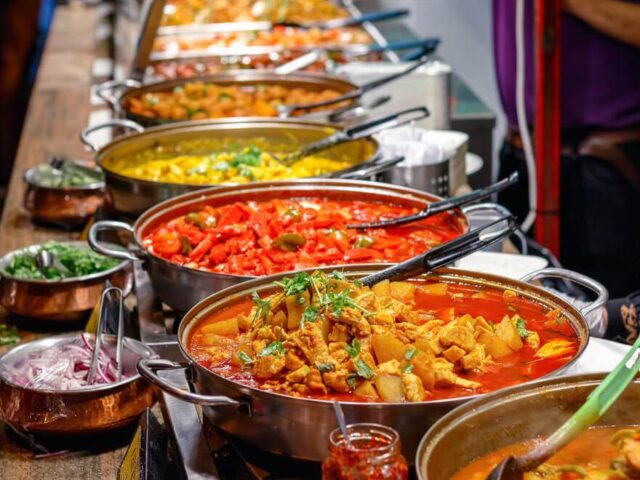
We see this same pattern immerge in the Indian restaurants across America. These “curry houses” – as they are so often referred to – cater to the western palate with rich sweet gravies and staple ingredients that represent various sections of Indian states in a hodgepodge mix of east meets west. Often times you find these “curry houses” serving chicken tikka masala made with boxed masalas and spices that are flat and dull smeared with cream and sugar.
Many Americans learned what Indian food was from the “curry houses” rather than the culture that birthed this amazing cuisine. It’s not that these “curry houses” are doing it wrong, many hard-working immigrants came to America to work in restaurants with hopes and dreams, the issue at hand is that the lack of information concerning Indian cuisine means that American’s don’t learn regional dishes, they learn the “western style” of Indian food. American’s don’t realize that butter chicken isn’t Indian by origin but rather a dish made to cater to the British palate. We put Indian cuisine in a takeaway box and marvel at the smell but refuse to pay for the experience of elevating the cuisine to the level of fine dining it deserves.
Factor #2 Spice vs Spicy
When Westerners hear the words “Indian food”, they think spicy. Westerners oftentimes do not like spicy food. For Diwali this year, I made sweets for a pop-up dinner I hosted at a friend’s restaurant, spending hours making mawa and handcrafting gulab juman, badam peda, rasgulla, and kaju katli. I presented the sweets to the staff of the restaurant and as they passed the tray of sweets, I asked them if they would like to try some Indian desserts. The first question they asked was, “Are they spicy? I don’t like spicy.”
For Indian food to ever become part of the cultural mainstream in America, Americans need to know the difference between spicy and spice. Yes, there are plenty of spicy dishes in India but Indians are the masters of spicy and know how to balance these spices in what we know as chatpata.
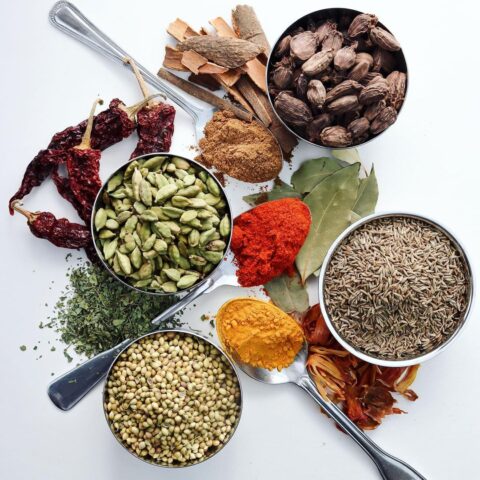
Many Indian spices are not used much in western cuisine. Spices like cardamom, cinnamon, clove, and ginger tend to be used at holidays like Christmas in desserts rather than in savory dishes. Americans tend to be simple with their food and flavors and trying something as “exotic” as Indian food comes with a lot of hesitation.
When I started making dishes for friends and subsequently customers, I tried to find the balance between spicy (masaledaar) and tolerable. Everyone has different spice levels they prefer but balance can be achieved in a variety of ways. Take for instance my take on samosa chaat. For the samosa chaat I like to make, I sweet pickle green chilies for an extra layer of flavor that goes on top of the yogurt and accompaniments. I make a date and tamrind chutney to bring in a sour component to the chaat and the samosa is filled with potato (aloo) and green peas (matar). This helps bring many different flavors and sensations to the dish. From sour to sweet, spicy to salty, food is about balance and sensation.
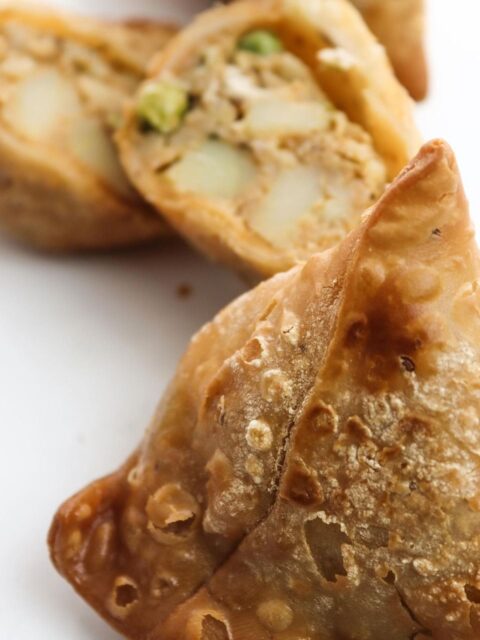
One of my favorite dishes to make is a spin on masoor dal. Often times my mentor Indira would make masoor dal for lunch and the aroma of it would be intoxicating. One day, I was making hummus for a catering event and I thought back to the aroma of that masoor dal. This was the concept that gave birth to my masoor dal hummus.
I wash and boil the dal with turmeric, salt and bay leaves then I fry the aromatics of ginger, garlic, onion, tomato, cumin, ajwain and hing. I temper (tadka) that oil into the dal once it is cooked and then add sesame seed paste and a pinch of garam masala before blending it. I top the hummus with desi ghee, pomegranate seeds and sev. This hummus is delicious and has a creamy flavor that tastes like tadka dal. It is a simple way allow people to relate to a food they might not have tried.
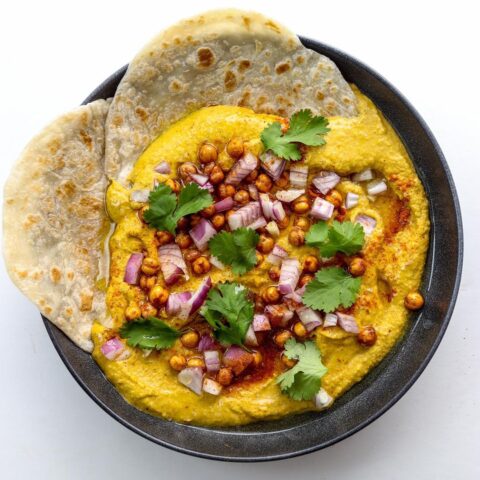
Factor #3 Marketing
India, despite having the 5th highest GDP in the world, ranks very low when it comes to the fine dining food chain. As I highlighted previously, we can blame xenophobia but one of the biggest factors to its lack of mainstream acceptance in America can be attributed to the buffet.
Many “curry houses” across America have Indian food buffets for lunch and weekend specials. This attracts a consumer who wants to save money and try many different things. The customer walks in and smells spice in the air and sees vats of brownish-yellow liquid. This doesn’t look like the food Americans consume and so they try to read the words scribbled on the buffet line, “Massoor Dal, Dal Makhani, Murg Makhani, Naan,” and the list goes on. These aren’t words they know and so they’re apprehensive. These colored sauces disguise the ingredients making it hard for people to know what they are eating. Americans see “brown stew, orange stew, green stew”, and it causes their guard to be up. They’re unsure of what they are eating, maybe reminded of a friend who told them Indian food is way too spicy as they spoon some gravy on a plate. All of these factors are already in their head before they take a bite.
Indian food in America has been marketed as a cheap takeaway. Americans love naan but don’t know about chapati. They love butter chicken but don’t know about Pakke Kele ki Sabji. They know about spicy but not chatpata. We don’t know this because we have been shown that Indian food is cheap and not refined. This has been the marketing that has infected our palates with lies.
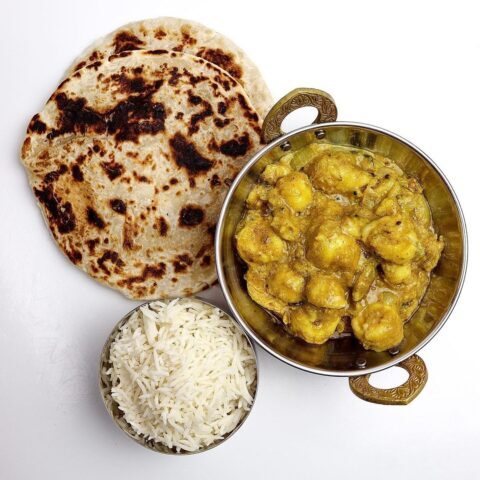
Americans are currently in a plant-based craze when it comes to their food. The rise of vegan foods, vegetarians, and more plant-based diets have shifted the focus from large portions of meat to more vegetables. This should be a moment that Indian food shines in America. Major chains like Burger King and KFC have plant-based options but Indian food has been paving the way for these items all along with the delicious vada pav, yet Indian food is still marketed as cheap and spicy.
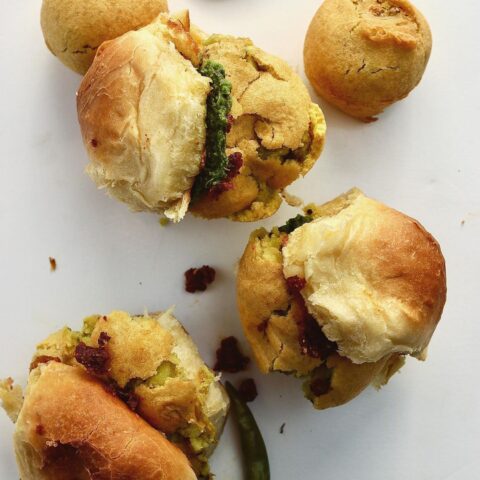
Be the Change
All is not lost. There are restaurants popping up across America that are elevating Indian food and flavors to fine dining giving it the respect it deserves. Restaurants like Rooh in San Francisco, New Delhi and Chicago, Indian Accent in London, New Delhi and New York City, and Ghee in Miami are paving the way for millennials to enjoy Indian food, reimagined. They are focused on authenticity but also balance and creativity.
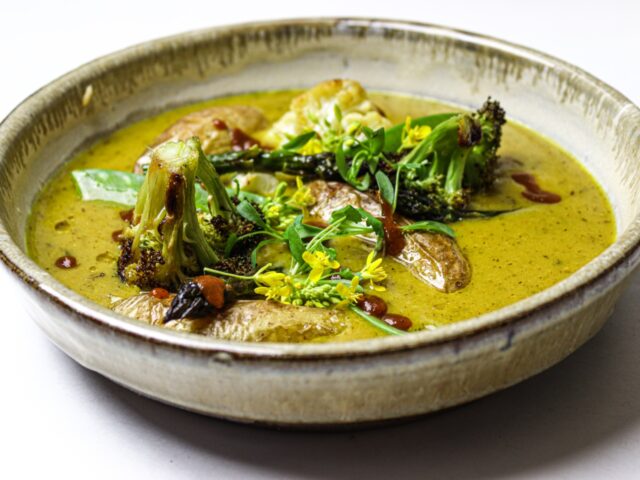
I am a western chef. I will never fully understand the complexities of Indian culture and cuisine, but my passion to try and learn has taken me on a journey that has consumed my career today. From reading, learning history, practicing my Hindi to recreating regional cuisines from my friends across India, I have a burning desire to showcase this food with the world.

My dishes seek to honor the soul (atma) of the cuisine but also bring a new interpretation to it. It doesn’t mean that the old style of a cuisine is wrong, it is simply that as chefs, we have the responsibility to share with someone our art. We are feeding them through our acts of cooking. I love butter chicken but I love the idea of what butter chicken means more than I love the dish. Butter chicken has brought countless people to learn more about Indian food and culture and even though it is steeped in colonialism, it opens a path for others to appreciate more dishes.
Today, when I make butter chicken, I put a different interpretation on the dish. I sous vide chicken breast and then smoke it (Dhuanaar) before I sear it. I make the classic base gravy by frying my blend of whole masala in desi ghee. I bloom the spices and add onion, ginger and black garlic paste for a rich flavor to the gravy. I use heirloom tomatoes grown locally that have a high acid content. I finish the gravy with freshly ground garam masala and hung yogurt. I sear the chicken and slice it. When I plate the dish, I lay down the gravy and add the chicken in the middle. I finish it with cilantro oil and browned makhani crumbs to give the dish texture and another layer of richness.
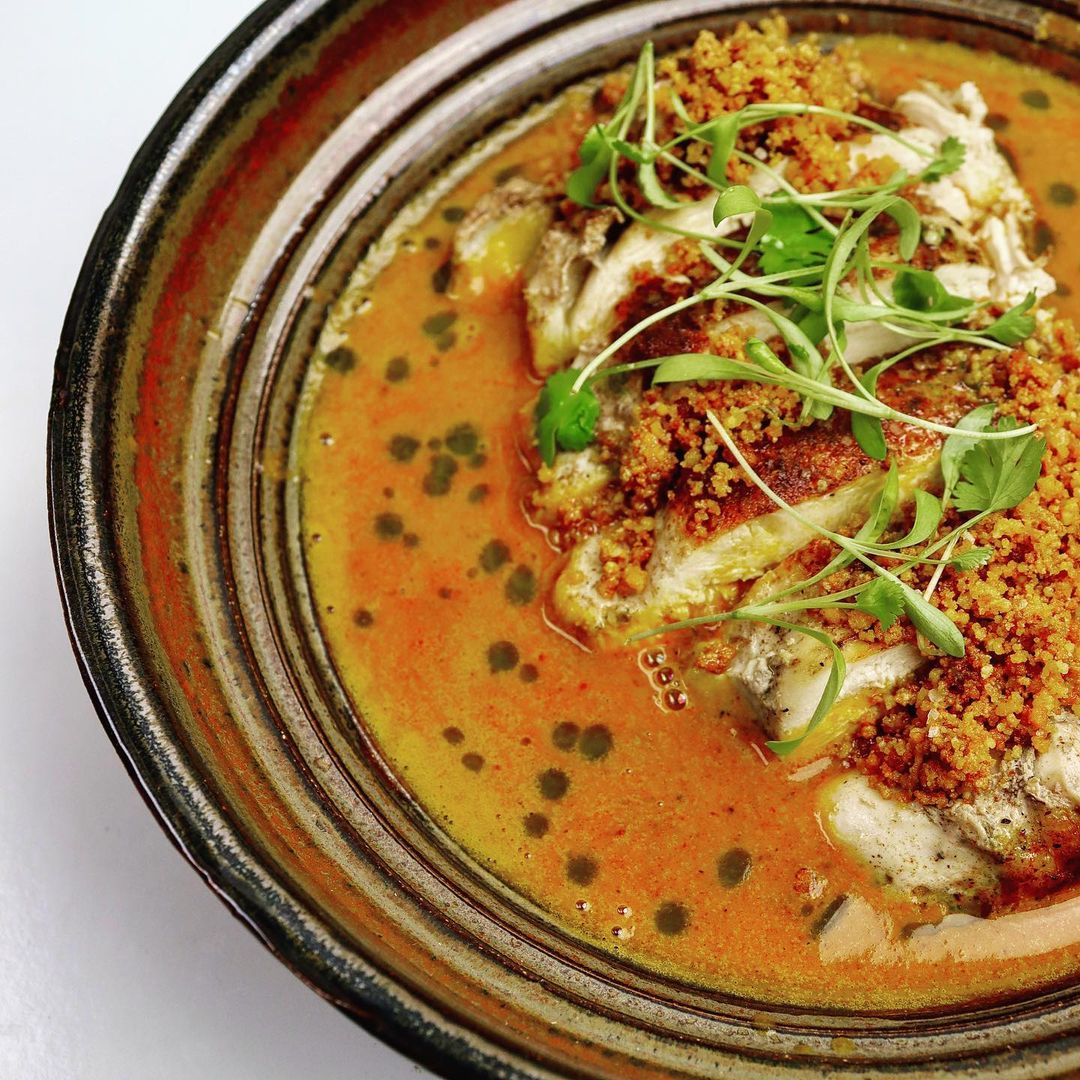
Indian food is not some broken cuisine that Americans (or I) need to mend to be socially acceptable. It is a beautiful cuisine as rich in culture as the gravies of the north. From the bawarchis that cooked for kings to the mummyji who rolls roti for her family, Indian cuisine reaches beyond our prejudices, our pride, and our preconceived notions and into the fabric of what makes us human, love. The act of genuinely caring and nurturing each other through time-honored traditions.
What will it take to bring Indian cuisine to the mainstream west and elevate it to the fine dining pantheon so many other cuisines have achieved? Maybe it doesn’t matter. Maybe if enough of us pour our creativity and passions into the history and soul of the food, the food will do the rest. If we want to change, we need to be the change. This was the premise that Gandhi ji lived his life on and it must also be true for the cuisine. The cuisine doesn’t need to change, we do. We must change our preconceived notions of what “Indian food” could be and open our minds to what it is, a deeply rich cuisine that deserves its moment among the stars.
Chef Keith Sarasin is a renowned chef, founder of The Farmers Dinner, restauranteur, and three-time author. His love for food was developed at a young age when he would cook for his mother using old cookbooks that were given to him by his grandmother.
Chef Keith’s newest project ‘Aatma’ is an exciting one-of-a-kind pop-up tasting experience showcasing food from the Indian subcontinent presented with modern techniques and styles. ‘Aatma’s’ tasting menus are inspired by various states across India using fresh local ingredients from New England farms. Chef Keith uses his passion for history and the spices and flavors of the Indian subcontinent with fresh, seasonal ingredients to create a dining experience like no other.
Translations and detailed descriptions are provided to give a better understanding of the story to people from different cultural backgrounds across the globe.

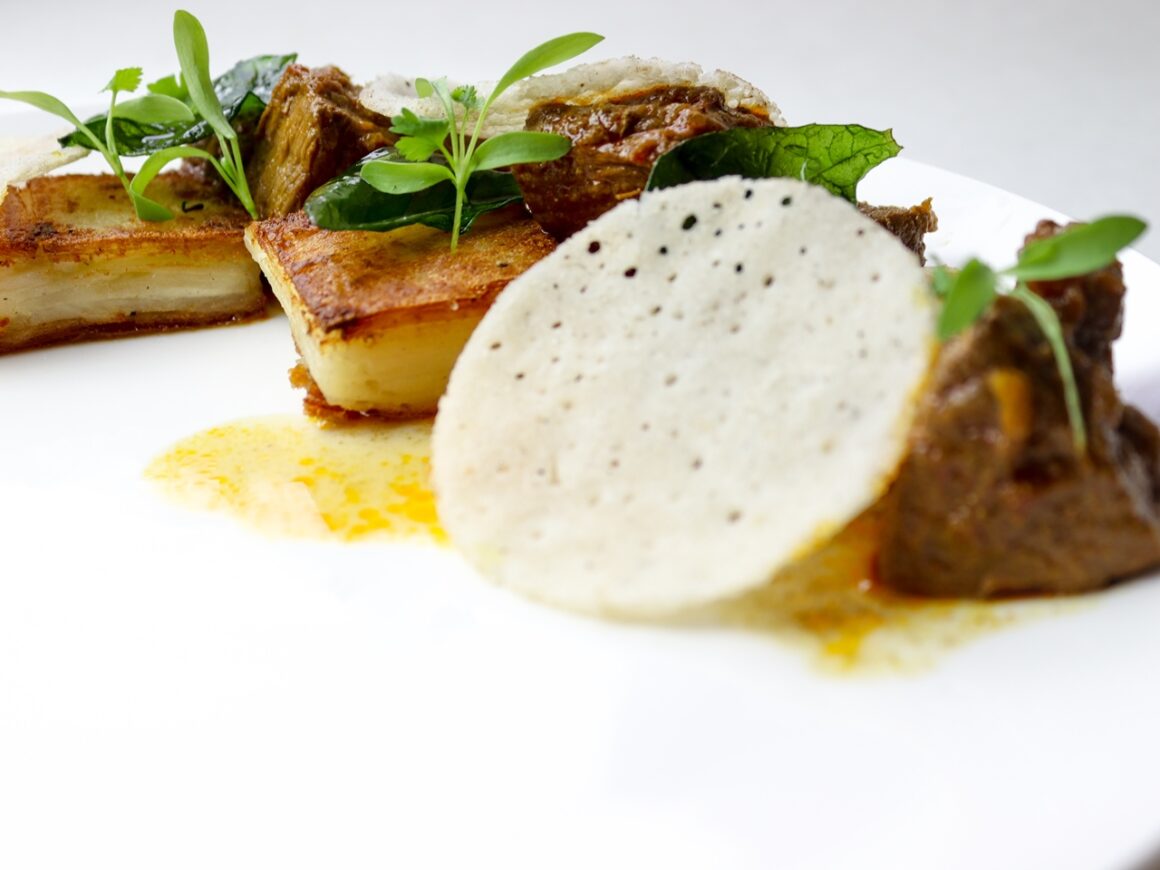
There is so much truth in what Keith is saying, what he isn’t saying, coz he’s a nice guy, is that Indians haven’t really helped Indian cuisine in the US and that that perhaps is yet another layer why Indian cuisine is seen as cheap, spicy, oily and all of the rather negatively used adjectives
thank you Keith for this
PS loved the Vada-Pao reference 🙂
Keith is a wonderful person, but he’s also in love with Indian food, so his views are probably all heart. 🙂
And true, many Indians are responsible for the perception that’s been created around the cuisine but there are also people like you, Keith and many others who are trying to change this misrepresentation; and we see hope in that. In our own small way, we’re also attempting to contribute towards shifting the narrative, one story at a time.